Hello folks! We have answered all Chapter 13 exercise questions, extended learning activities, in-text questions, activities along with extra questions of many formats below. The important topics have been stressed and all other details have been covered well. Both concepts and facts have been covered in equal measure. We have also included attractive figures and images to help your learning – cheers!
Solutions to Exercises (Page No 164) of NCERT Class 7 Science Chapter 13 Wastewater Story:
1. Fill in the blanks:
(a) Cleaning of water is a process of removing ____________.
(b) Wastewater released by houses is called ____________.
(c) Dried ____________ is used as manure.
(d) Drains get blocked by ____________ and ____________.
Answers:
(a) Cleaning of water is a process of removing pollutants.
(b) Wastewater released by houses is called sewage.
(c) Dried sludge is used as manure.
(d) Drains get blocked by cooking oils and fats.
2. What is sewage? Explain why it is harmful to discharge untreated sewage into rivers or seas.
Answer:
Sewage is wastewater released by homes, industries, hospitals, offices etc and also rainwater that flows and enters the drains. Untreated sewage has many dissolved and suspended pollutants. It also contains harmful bacteria and microbes which cause diseases like cholera, typhoid, dysentery etc. Hence it should not be allowed to contaminate rivers and seas.
3. Why should oils and fats not be released in the drain? Explain.
Answer:
Oils and fats should not be released in the drain firstly because they harden and block the pipes. Secondly, in an open drain the oils and fats enter into soil pores and block them. This reduces the effectiveness of the soil in filtering water.
4. Describe the steps involved in getting clarified water from wastewater.
Answer:
The steps involved in getting clarified water from wastewater are:
(i) Waste water is passed through bar screens. Large objects like rags, sticks, cans, plastic packets, napkins are removed.
(ii) Water goes to a grit and sand removal tank. The speed of the incoming wastewater is decreased which allows sand, grit and pebbles to settle down.
(iii) The water is then allowed to settle in a large tank which is sloped towards the middle. Solids like faeces settle at the bottom and are removed with a scraper. This is the sludge. A skimmer removes the floatable solids like oil and grease. Water so cleared is called clarified water.
(iv) Air is pumped into the clarified water to help aerobic bacteria to grow. Bacteria consume human waste, food waste, soaps and other unwanted matter still remaining in clarified water. After these impurities settle, water is removed by sand drying beds or machines.
(v) It is disinfected with chlorine or ozone. Then it is discharged into sea, river or into the ground where nature cleans it up further.
5. What is sludge? Explain how it is treated.
Answer:
Sludge is the solids like faeces which settle down at the bottom during the wastewater treatment process.
(i) It is removed using a scraper and then transferred to a tank where it is decomposed by anaerobic bacteria to produce biogas.
(ii) The biogas is then used as fuel and to produce electricity.
6. Untreated human excreta is a health hazard. Explain.
Answer:
Untreated human excreta is a health hazard because it causes water and soil pollution. Both the surface water and groundwater get polluted. The water we drink through is actually groundwater. So polluted groundwater becomes the most common source of water borne diseases like cholera, typhoid, polio, meningitis, hepatitis and dysentery.
7. Name two chemicals used to disinfect water.
Answer:
Two chemicals used to disinfect water are chlorine and ozone.
8. Explain the function of bar screens in a wastewater treatment plant.
Answer:
Bar screens are used to separate large objects from wastewater in a wastewater treatment plant. When water passes through the bar screen large objects like rags, sticks, cans, plastic packets, napkins etc are unable to pass through and get separated.
9. Explain the relationship between sanitation and disease.
Answer:
The relationship between sanitation and disease is that poor sanitation is the cause of large number of diseases. Poor sanitation pollutes water and soil and causes water borne diseases such as like cholera, typhoid, polio, dysentery etc. Adopting good sanitation can keep our water clean and keep us healthy.
10. Outline your role as an active citizen in relation to sanitation.
Answer:
My role as an enlightened citizen actively promoting sanitation will be to start by ensuring proper waste disposal in my home. I plan to approach the municipality and insist that open drains be covered. I shall also speak to my neighbours and request them to handle their own sewage with care.
11. Here is a crossword puzzle: Good luck!
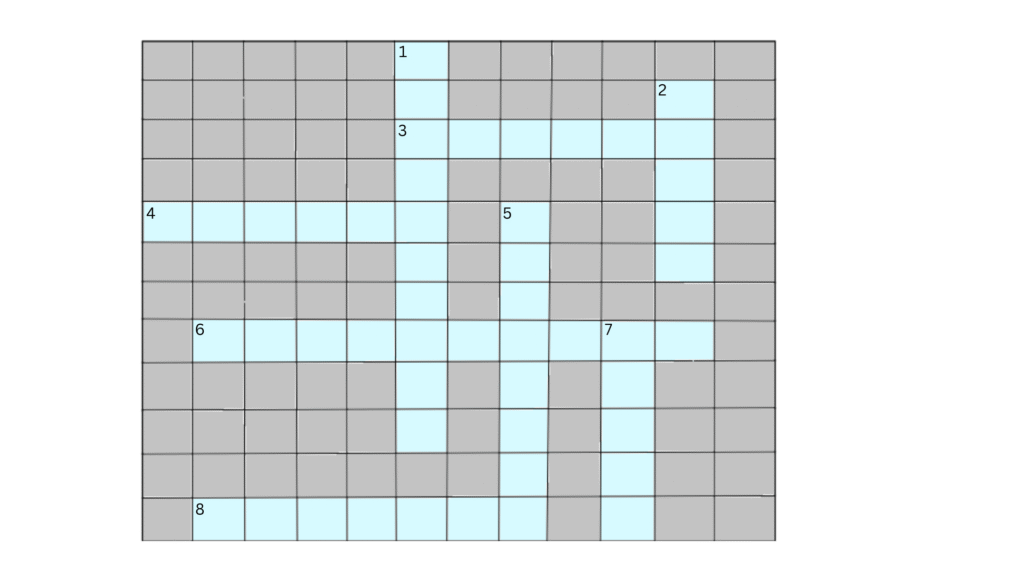
Across
3. Liquid waste products
4. Solid waste extracted in sewage treatment
6. A word related to hygiene
8. Waste matter discharged from human body
Down
1. Used water
2. A pipe carrying sewage
5. Micro-organisms which causes cholera
7. A chemical to disinfect water
Answer: The completed crossword is shown below:
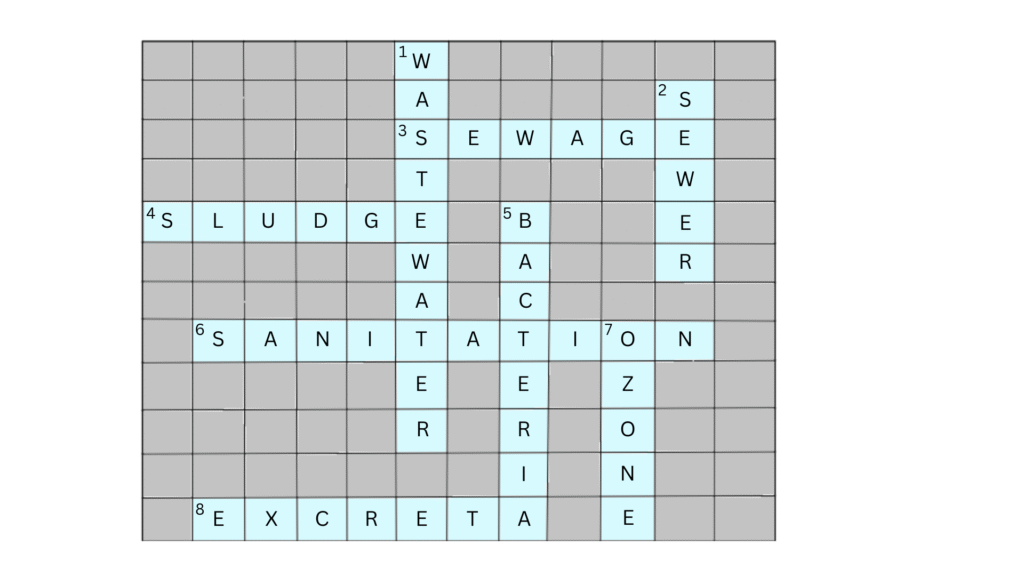
12. Study the following statements about ozone:
(a) It is essential for breathing of living organisms.
(b) It is used to disinfect water.
(c) It absorbs ultraviolet rays.
(d) Its proportion in air is about 3%.
Which of these statements are correct?
(i) (a), (b) and (c)
(ii) (b) and (c)
(iii) (a) and (d)
(iv) All four
Answer: (ii) (b) and (c) is the correct answer.
Solutions to Extended Learning – Activities and Projects (Page No 165) of NCERT Class 7 Science Chapter 13 Wastewater Story:
1. Construct a crossword puzzle of your own using the keywords.
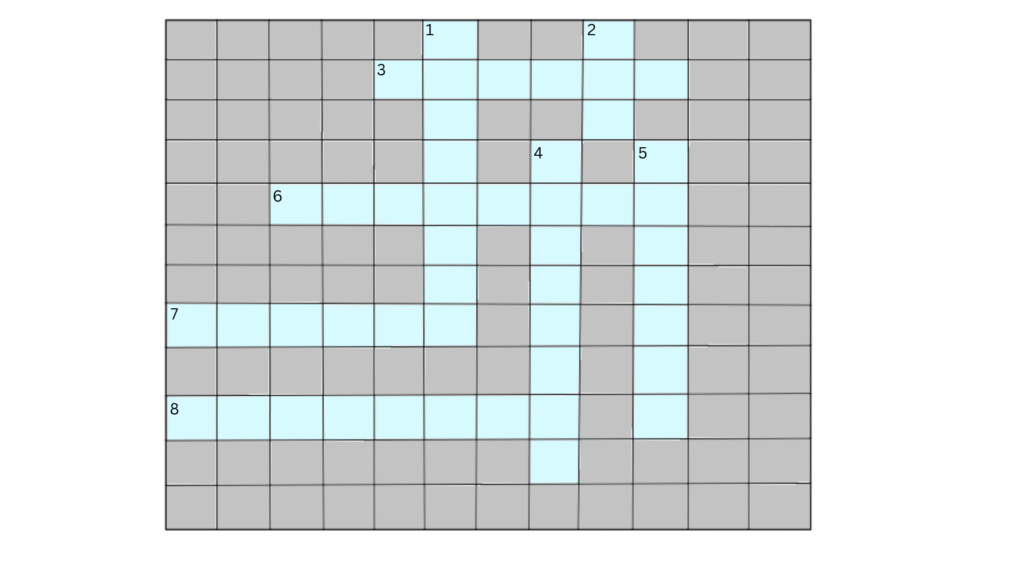
Across
3. Produced after decomposition of sludge
6. Chemical used to disinfect water
7. Get separated by bar screen
8. Sewage transport system
Down
1. Protozones
2. Harden and block pipes
4. Nutrients in sewage
5. Air helps this type of bacteria grow
Answer:
Solution to Extended Learning Problem 1
2. Then and now: Talk to your grand parents and other elderly people in the neighbourhood. Find out the sewage disposal systems available to them. You can also write letters to people living in far off places to get more information. Prepare a brief report on the information you collected.
Answer:
Solution to Extended Learning Problem 2
3. Visit a sewage treatment plant. It could be as exciting and enriching as a visit to a zoo, a museum, or a park. To guide your observation here are a few suggestions.
Record in your notepad:
Place ___________ Date ___________ Time ___________
Name of the official at the plant __________ Guide/Teacher ___________
(a) The location of the sewage plant.
(b) Treatment capacity.
(c) The purpose of screening as the initial process.
(d) How is air bubbled through the aeration tank?
(e) How safe is the water at the end of the treatment? How is it tested?
(f) Where is the water discharged after treatment?
(g) What happens to the plant during heavy rains?
(h) Is biogas consumed within the plant or sold to other consumers?
(i) What happens to the treated sludge?
(j) Is there any special effort to protect nearby houses from the plant? (k) Other observations.
Answer:
Solution to Extended Learning Problem 3
Solutions to In Text Questions of NCERT Class 7 Science Chapter 13 Wastewater Story:
1. (Page 156) Have you ever thought where the wastewater goes and what happens to it?
Answer:
(i) The wastewater from people’s homes and public buildings is transported through a network of underground pipes called sewers to a treatment plant.
(ii) It is treated and purified in the plant in several steps.
(iii) The clean water is discharged into the sea, river or the underground water distribution system.
2. (160) The water in a river is cleaned naturally by processes that are similar to those adopted in a wastewater treatment plant.
Answer:
The river flows slowly in certain areas or is stagnant, which lets the solid particles settle at the bottom. At.mospheric oxygen dissolves in the water and enables bacteria and algae to break down organic substances and use them as food. Natural filters such as rock and gravel further filter the flowing water.
3. (161) Don’t add to the load of WWTP. Paheli wonders how!
Answer: We will not add to the load of WWTP by properly disposing waste in our own homes. Cooking oils, fats, chemicals, food remains and other solids should not be allowed to enter the drain. This will prevent them entering the sewage. We should also request our neighbours to handle their own sewage with care.
4. (162) Boojho wants to know how sewage is disposed of in an aeroplane.
Answer:
The sewage is stored in wastewater storage tanks inside the aeroplane. After the airplane lands the ground crew connect a specialized vehicle to the tank and the wastewater is pumped out. It is then transported to a wastewater treatment facility for proper treatment and disposal.
Solutions to All Activities of NCERT Class 7 Science Chapter 13 Wastewater Story:
1. Complete Activity 13.1 (Page 156). We have given one example of the use of clean water. You can add may more.
Answer:
2. Complete Activity 13.2 (Page 157). Locate an open drain near your home, school or on the roadside and inspect water flowing through it. Record colour, odour and any other observation. Discuss with your friends and your teacher and fill up the following Table 13.1.
Table 13.1 Contaminant survey
| S. No | Type of sewage | Point of origin | Contaminants | Any other remark |
| 1. | Sullage water | Kitchen | ||
| 2. | Foul waste | Toilets | ||
| 3. | Trade waste | Industrial and commercial organisations |
Answer:
3. Complete Activity 13.3 (Page 158). Study the sewage route in your home/school/building. Do the following:
- Make a line diagram of the sewage route.
- Walk down the street or survey the campus to find the number of manholes.
- If possible, observe open drain and record which living organisms are found in and around it.
Answer:
4. Complete Activity 13.4 (Page 158). Divide yourself into groups to perform the activity. Record observations at each stage.
Now answer the following questions
(a) What changes did you observe in the appearance of the liquid after aeration?
(b) Did aeration change the odour?
(c) What was removed by the sand filter?
(d) Did chlorine remove the colour?
(e) Did chlorine have an odour? Was it worse than that of the wastewater?
Answer:
Extra Questions to Complement Solutions to NCERT Class 7 Science Chapter 13 Wastewater Story:
Very short answer type questions:
1. A chemical plant releases a lot of dirty water. What type of sewage is this?
Answer:
This type of waste is called trade waste.
2. Is the water that we drink polluted?
Answer:
No the water that we drink is clean water.
3. How is wastewater different from drinking water?
Answer:
Wastewater contains different kinds of polluted and pathogens unlike drinking water.
4. Is wastewater recycled?
Answer:
Yes, wastewater is treated in a wastewater treatment plant (WWTP) and is sent into the water distribution systems for our use.
5. How many people do not have access to clean drinking water?
Answer:
More than one billion people do not have access to clean drinking water.
6. Can sewage treatment be done quickly?
Answer:
No, proper sewage treatment happens in several stages.
7. Is sewage a solid waste?
Answer:
No sewage is a liquid waste comprised mostly of water and dissolved and suspended impurities.
8. Name some inorganic impurities present in sewage.
Answer:
Some inorganic impurities present in sewage are nitrates, phosphates, metals etc.
9. What is the appearance of sewage water?
Answer:
Sewage water in general is grey-black in colour.
10. What gases does sewage water give out?
Answer:
Sewage water contain gases like hydrogen sulfide, ammonia, carbon monoxide, sulfur dioxide etc.
11. Screening, sedimentation, skimming and aeration in wastewater treatment are examples of what kind of process?
Answer:
Screening, sedimentation, and skimming are examples of physical wastewater treatment processes.
12. Why should you not dump plastic waste down the drain?
Answer:
Plastic wastes can clog drains and cause water to overflow, leading to unsanitary conditions.
13. Why should you not dump strong chemicals down the drain?
Answer:
Strong chemicals such as paints, solvents, insecticides etc kill microbes which help to purify wastewater and hence should not be dumped down the drain.
14. Name one use for dried sludge produced during wastewater treatment.
Answer:
Dried sludge is used as manure, returning organic matter and nutrients to the soil.
15. Name one method to kill microbes present in the wastewater.
Answer:
You can kill microbes present in wastewater by using chemicals like chlorine and ozone.
Short Answer Type Questions:
1. Fresh water is increasingly becoming scarce. Give reasons.
Answer:
Fresh water is increasingly becoming scarce because of huge population growth, rising pollution, rapid industrial development, mismanagement and wastage of water.
2. What was the objective of the International Decade for action on “Water for life”?
Answer:
The objective of the International Decade for action on “Water for life” was to reduce by half the number of people who do not have access to safe drinking water during the period from 2005 to 2015.
3. How does rainwater contribute to sewage, and what harmful substances can it carry with it?
Answer:
Rainwater contributes to sewage when it washes off roads and rooftops during storms or heavy rain. As it flows, it carries harmful substances like pollutants, chemicals, oils, and other debris, which are dissolved or suspended in the water and increase the already present impurities in the sewage.
4. Why does sewage water give off foul odour?
Answer:
Sewage water gives off foul odour because of decomposing organic waste such as human and animal faeces, food scraps etc. Bacteria and other microorganisms decompose these substances which releases foul-smelling gases. These gases with strong odours are the main cause of the foul smell.
5. What is the function of sewerage?
Answer:
Sewerageis an underground transportsystem consisting of a network of pipes which transports sewage. It carries sewage from the point of being produced to the point of disposal in the wastewater treatment plant.
6. What are manholes used for? Where are manholes located?
Answer:
Manholes are used as access points by personnel to inspect, clean and maintain the sewer lines. They help in release of foul gases. Manholes are located every 50m to 60 m in the sewerage, at the junction of two or more sewers and at points where there is a change in direction.
7. Why are multiple steps necessary in the wastewater treatment process?
Answer:
Wastewater is contaminated by physical, chemical and biological matter. Certain kinds of processes are suitable for certain kinds of impurities. For example, physical processes such as skimming, sedimentation etc cannot separate dissolved chemicals. Hence, multiple physical, chemical, and biological processes are needed to separate all the impurities.
8. What is the difference between primary sludge and activated sludge in the wastewater treatment process?
Answer:
Activated sludgeforms during the second stage of the treatment process whereas primary sludgeforms during the first stage.Activated sludge has a high content of aerobic bacteria which decompose the organic matter still present whereas primary sludge does not. Activated sludge requires aeration to form, unlike primary sludge.
9. Name a plant which acts like a natural wastewater treatment process.
Answer:
Eucalyptus trees act like a natural wastewater treatment process because they have the ability to absorb all surplus wastewater rapidly and release pure water vapour into the atmosphere. Hence it is advisable to plant eucalyptus trees all along sewage ponds.
10. Name a toilet which can naturally generate manure.
Answer:
A vermi-processing toilet naturally generates manure using worms. Human excreta delivered from the toilet are digested by worms to form vermi cakes – a resource much need for the soil.
11. Suppose you are required to spend some time in a remote region in a building which has no sewerage system. How do you solve the problem of sewage disposal?
Answer:
Since there is no access to the sewerage system, a temporary septic tank should be installed beside the building underneath the ground. All waste will flow into the tank and organic waste will be decomposed by bacteria.
12. Which were the earliest urban sanitation systems we know of?
Answer:
The earliest urban sanitation systems were built in the ancient Indus Valley civilisation cities of Mohenjo Daro and Harappa. Individual houses or groups of houses obtained water from wells. There was a separate room for bathing and wastewater went into the covered drains lining the streets.
Long Answer Type Questions:
1. Describe various steps of cleaning wastewater in a wastewater treatment plant.
Answer: The various steps of cleaning wastewater in a wastewater treatment plant (WWTP) are:
(i) Bar Screening: Wastewater is passed through bar screens. Large objects like rags, sticks, cans, plastic packets, napkins get caught in the screen and are removed.
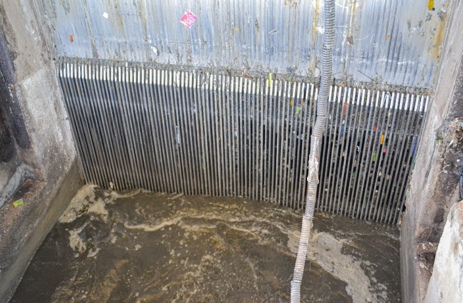
(ii) Grit and Sand Removal: Water then goes to a grit and sand removal tank. This is the primary sedimentation tank. The speed of the incoming wastewater is decreased to allow sand, grit and pebbles to sink to the bottom and settle down.
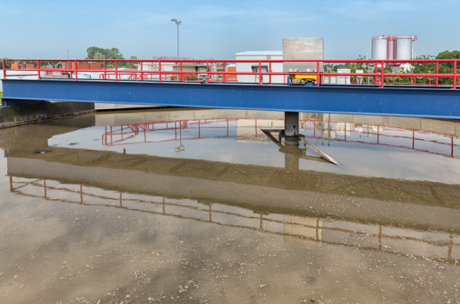
(iii) Water Clarification: The water is then allowed to settle in another large tank. This is the secondary sedimentation tank sloped towards the middle. Solids like faeces called the sludge settle at the bottom and are removed with a scraper. A skimmer removes the floatable solids like oil and grease. Water so cleared is called clarified water. The sludge is decomposed to form a by-product called biogas.
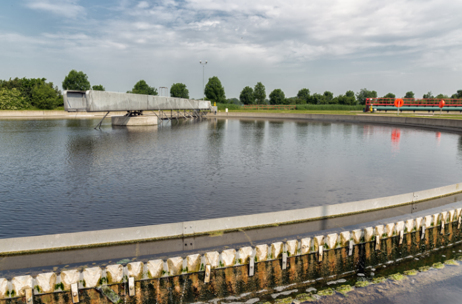
(iv) Aeration: Air is pumped into the clarified water. This is to help aerobic bacteria to grow. Bacteria consume human waste, food waste, soaps and other unwanted matter still remaining in clarified water. After several hours, the suspended microbes settle at the bottom of the tank as activated sludge and the water is then removed from the top.
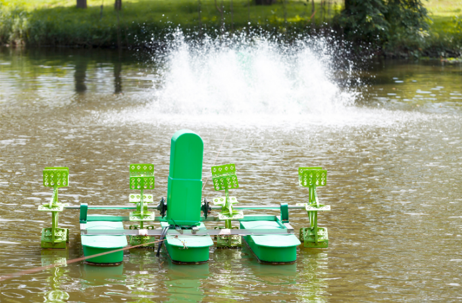
(v) Chlorine and Ozone Treatment: The treated water is disinfected with chlorine or ozone. It is then discharged into a sea, a river or into the underground distribution system.
2. How can homes and industries minimise waste and pollutants at their source?
Answer:
Homes can minimise waste and pollutants at their source in the following ways:
(i) Proper Waste Disposal: Specific methods should be followed for disposing specific kinds of wastes. Organic waste should be composted and plastics and other recyclable wastes should be recycled.
(ii) Reduce Plastic Waste: Use cloth bags for groceries, reusable water bottles, reusable utensils and cutlery etc to reduce plastic waste. Choose products with minimal packaging.
(iii) Reuse Items: You can reuse and donate or sell items which are no longer needed.
Industries can minimise waste and pollutants at their source in the following ways:
(i) Proper Waste Disposal: Systems should be put in place to separate general waste from recyclables.
(ii) Efficient Manufacturing: Manufacturing processes should be designed to minimize waste, specifically hazardous waste.
(iii) Designing Recyclable Products: Recyclable products should be engineered and manufactured so they can be reused and minimal waste is generated.
(iv) Conversion of Waste to Energy: Efficient methods of conversion of non-recyclable waste to renewable energy sources should be explored.
Fill in the Blanks:
sewage, biogas, sludge, dysentery, biogas, clean
(a) _________ water is scarce.
(b) The process of wastewater treatment is called _________ treatment.
(c) Protozones present in wastewater cause _________.
(d) Products of wastewater are _________ and _________.
(e) _________ is a source of renewable energy.
Answers:
(a) Clean water is scarce.
(b) The process of wastewater treatment is called sewage treatment.
(c) Protozones present in wastewater cause dysentery.
(d) Products of wastewater are sludge and biogas.
(e) Biogas is a source of renewable energy.
Match and Pair:
| Column I | Column II |
| (a) Salmonella paratyphi | (i) 2016 |
| (b) Swachh Bharat | (ii) Nutrient |
| (c) Chemical toilet | (iii) Typhoid |
| (d) Anaerobic bacteria | (iv) Onsite disposal of sewage |
| (e) Phosphorus | (v) Biogas production |
Answer: The correct table is shown below:
| Column I | Column II |
| (a) Salmonella paratyphi | (iii) Typhoid |
| (b) Swachh Bharat | (i) 2016 |
| (c) Chemical toilet | (iv) Onsite disposal of sewage |
| (d) Anaerobic bacteria | (v) Biogas production |
| (e) Phosphorus | (ii) Nutrient |
++++++++++++++
Frequently Asked Questions (FAQs) on NCERT Solutions to Class 7 Science Chapter 13 Wastewater Story:
Our expert team of Indian and foreign-educated teachers, engineers and scientists have taken care to provide you with material which answers all your questions and gives you additional practise. All the exercise questions, extended learning activities, in-text questions, activities and the self-designed extra questions have been scientifically answered using excellent figures and images. Please look at the figures when you study to ensure maximum retention.
The free PDFs of the solutions are available for download anytime! If you like our material and want more from us, keep visiting our website and subscribe to our email list. We will send you regular emails with lots of useful material and other resources which will be of immense help to you.
The following topics are covered:
13.1 – Water, Our Lifeline
13.2 – What is Sewage?
13.3 – Water Freshens Up – An Eventful Journey
13.4 – Wastewater Treatment Plant (WWTP)
13.5 – Better Housekeeping Practises
13.6 – Sanitation and Disease
13.7 – Alternative Arrangement for Sewage Disposal
13.8 – Sanitation at Public Places
Here are the number of problems for the chapter:
(i) 1 Fill in the Blanks Type Question (Question 1)
(ii) Short Answer Type Questions (Questions 2, 3, 5 – 10)
(iii) Long Answer Type Question (Question 4)
(ii) 1 Crossword Puzzle Question (Question 11)
There are three important parts in the chapter: the proper disposal of sewage, wastewater treatment methods and the consequences of unclean water. You will see long questions as well as short and objective type questions from these topics, so make sure you study them in detail. Understand the concepts thoroughly – this will help you understand and retain the material better. We have included all that you need to know in our material, so make sure you study it from front to back. We have included excellent images to help your learning – enjoy!
We have expert teacher-mentors on staff who will be there to train you and mentor you in case you need extra help. They follow a structured approach to learning and take the student’s special needs into account. Feel free to contact us anytime and let us help you!
Our teacher-mentors do an excellent job of training students using the right methods and helping them reach new heights. They also provide academic and career counselling to help you prepare for the future, which is essential at this stage. If that is what you are looking for, feel free to contact us with your requirements.
We provide expert one-on-one coaching and mentoring to you depending on your convenience and needs – have it completely your way! Feel free to reach out to us with your requirements anytime and let us help you out! Book any number of live classes now!


